
[ad_1]
Architecture is to building as the soul is to the body, and the same goes for the esoteric sculptures by Brooklyn-based welder and designer, Micah Rosenblatt, who presents a 16-piece body of work entitled City Block recently on view at The Front in his debut solo exhibition. The objects – an amalgam of steel, illuminated glass block, and upholstery – are a means to explore modernity and myth as the contemporary phases into antiquity. Largely inspired by New York City’s most endearing and sometimes controversial architecture, it considers the legacy of a skyline constantly captivating global audiences.
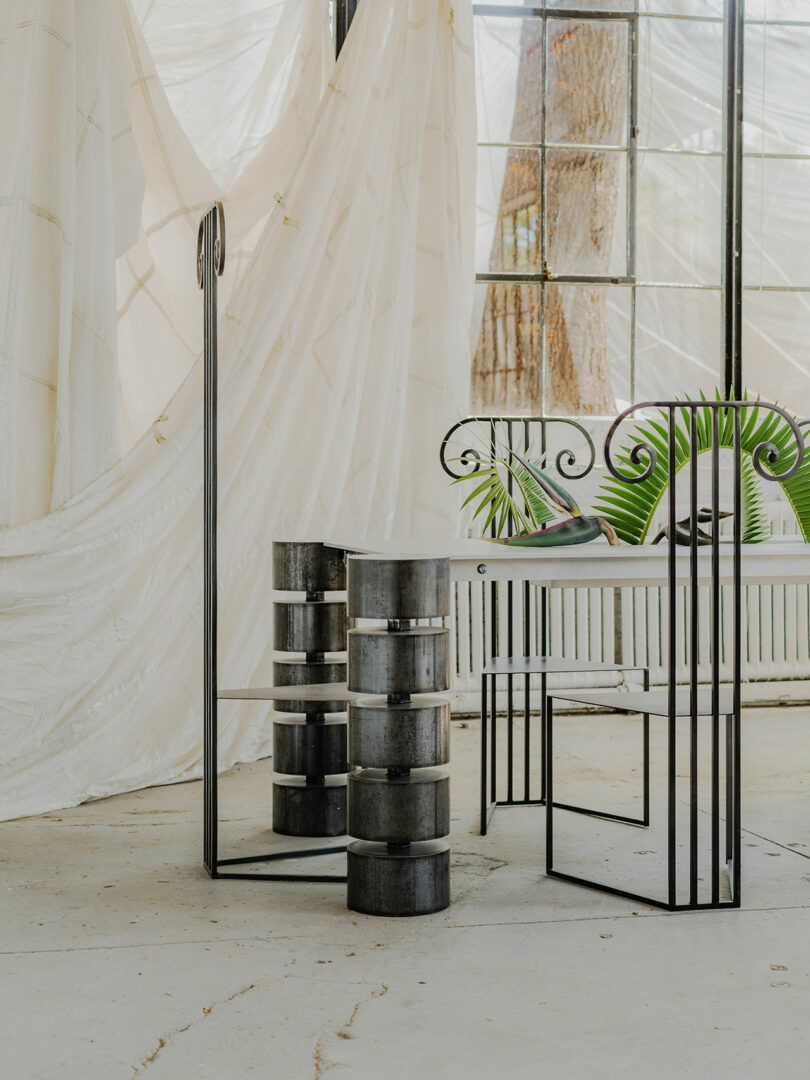
High Rise Column Chair; Column Chair; Forum Dining Table; Floral arrangement by WIFE NYC
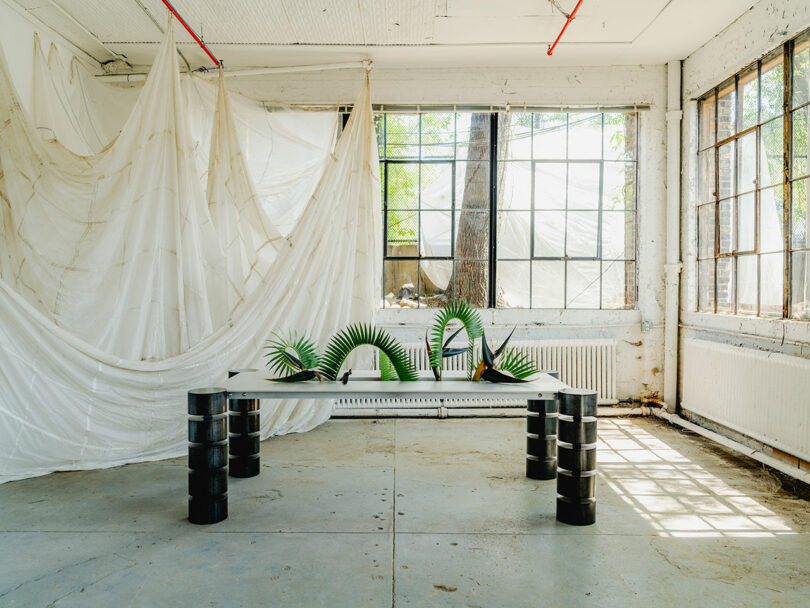
Forum Dining Table
“I love walking around New York City, getting lost, and simply looking up at the architecture in dialogue. There are so many weird facades, architectural compositions, and connections,” the designer says. “I wanted to take this dramatic and industrial scenery, and bring it to a smaller, domestic scale.”
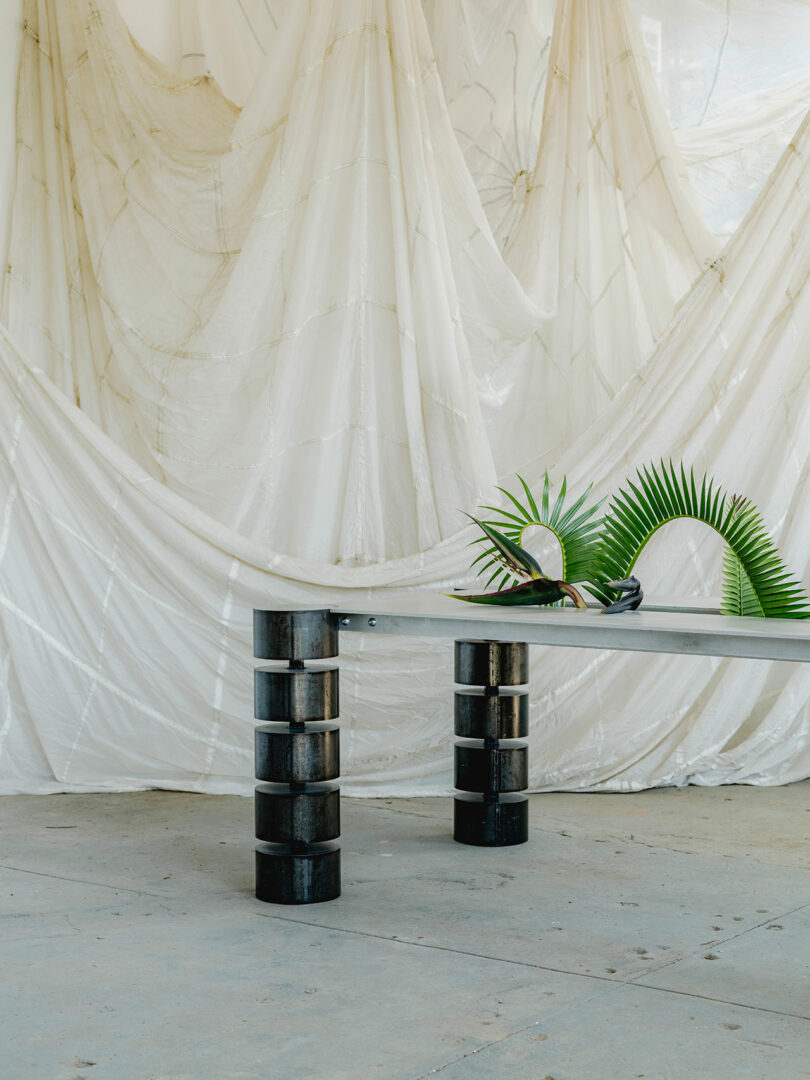
Forum Dining Table
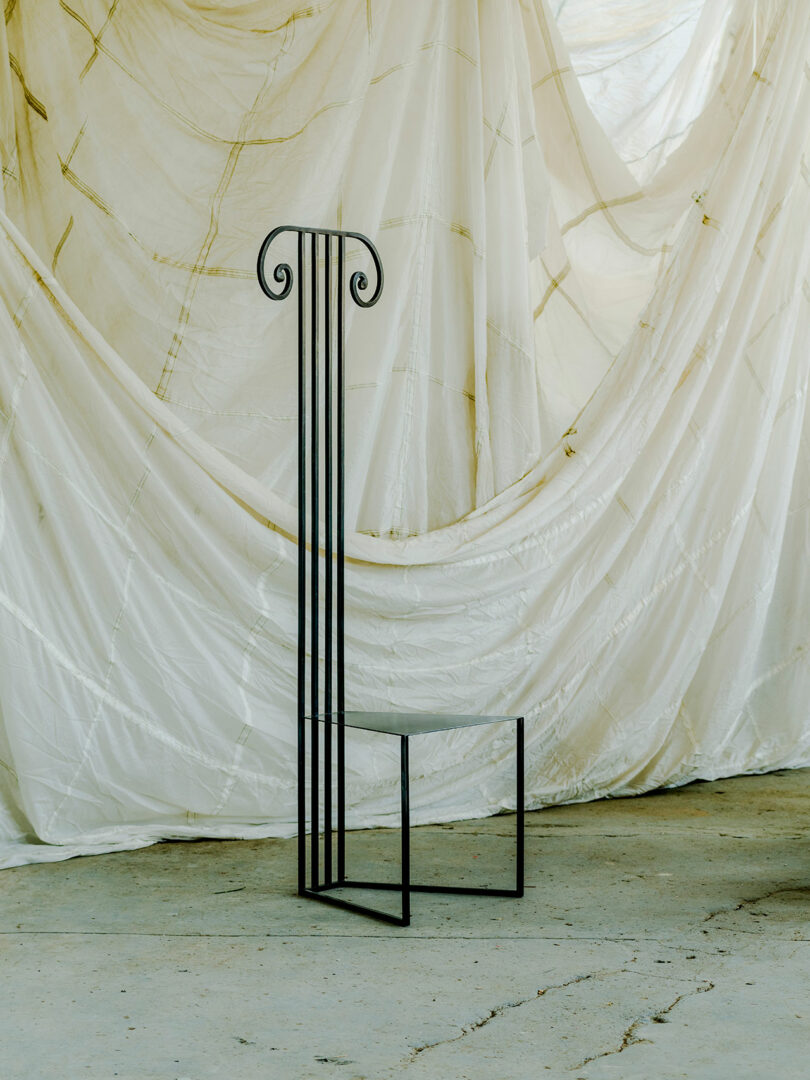
High Rise Column Chair
Each personal fixation becomes a sculptural furnishing informed by Rosenblatt’s knowledge of Jewish mysticism articulated through industrial materials in whimsical forms. Architectural elements are presented in a beguiling showcase comprising an upholstered loveseat, an archway, a glass block chair, floor lamps, and a dining table appointed by eight chairs, all in a striking balance between utility and l’objet d’art.
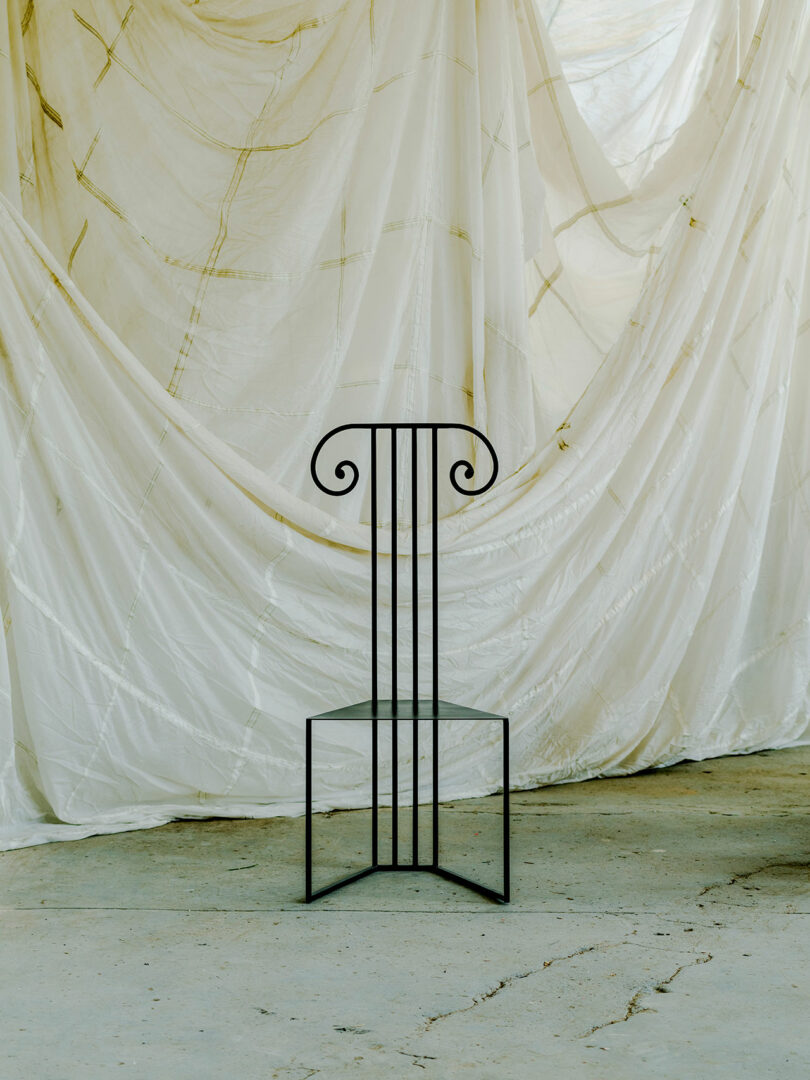
Column Chair
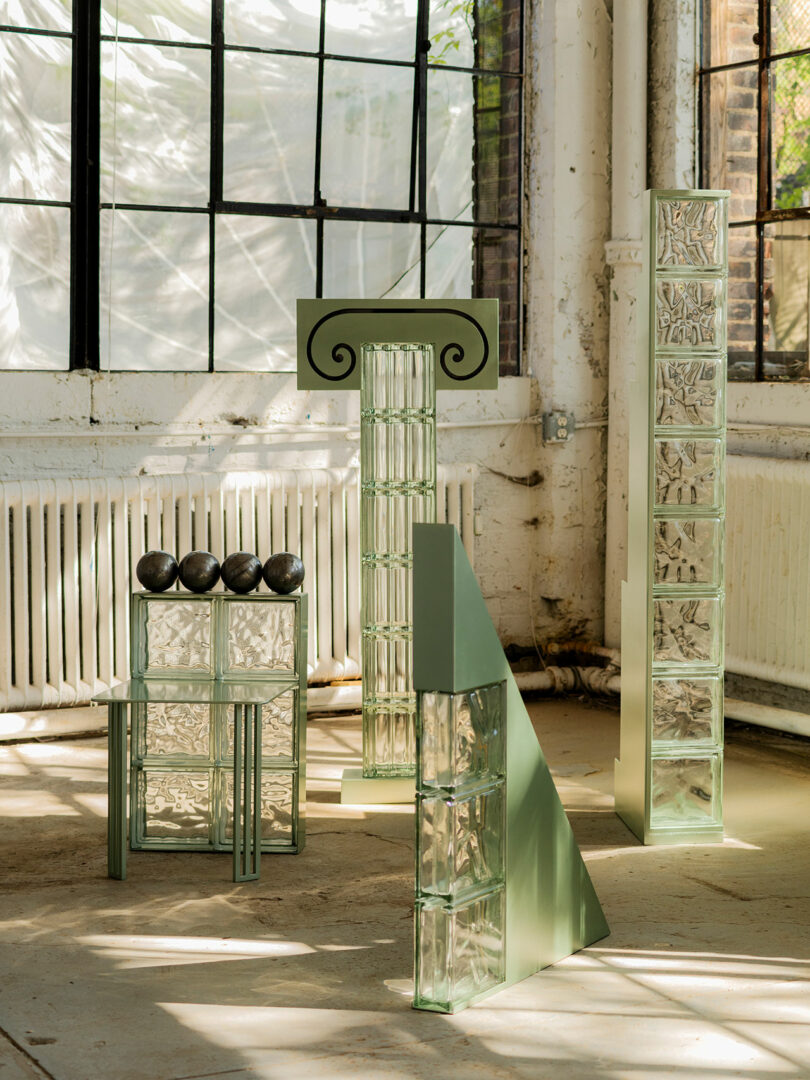
Radiant Bollard Chair; Volute Lamp; Flatiron Lamp; Glass Tower Lamp
The narrative begins with Rosenblatt’s subversive use of steel to fashion his iconic classical ionic Column Chairs. His fascination plays out as ½-inch blackened steel rods trace traditionally substantive structural devices, implying mass through line rather than volume. In contrast is the Forum Table, which embraces thickness without gaining an oppressive amount of visual weight. The maker sliced and stacked massive steel cylinders, then fastened each puck with 1-½-inch rods to construct relatively porous looking legs for the nine-foot altar. And the tabletop’s brushed aluminum surface features a six-inch-deep trough to accommodate everything from decor to hors d’oeuvres.
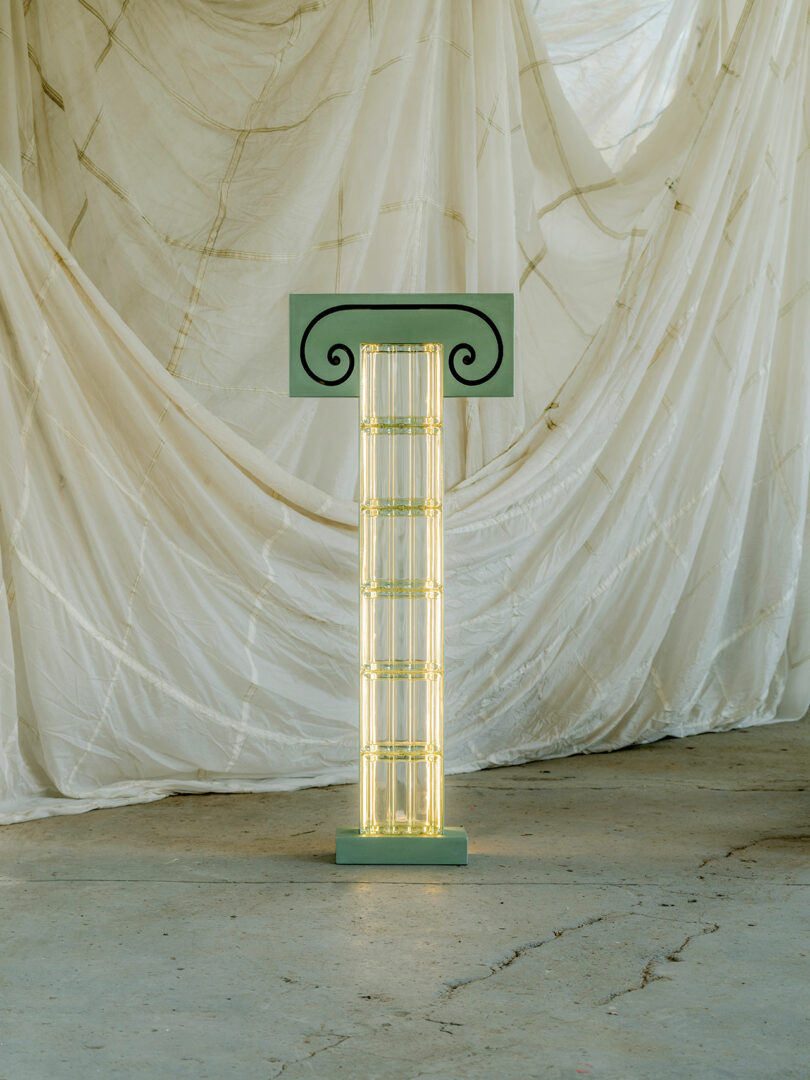
Volute Lamp
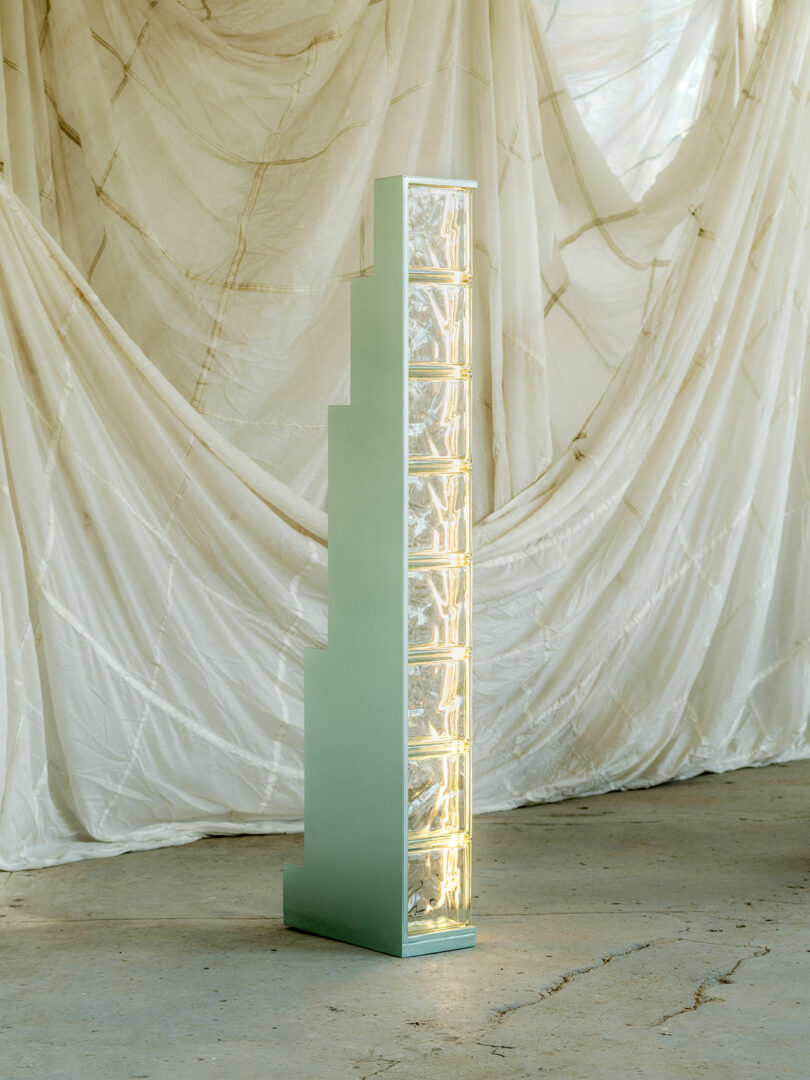
Glass Tower Lamp
“I am fascinated by steel and to this day I’m in awe of its capabilities, its strength, and the ways in which I can play with its visual weight,” says Rosenblatt. “For the ‘City Block’ collection, I especially wanted to play with its delicate nature achieved via absence.”
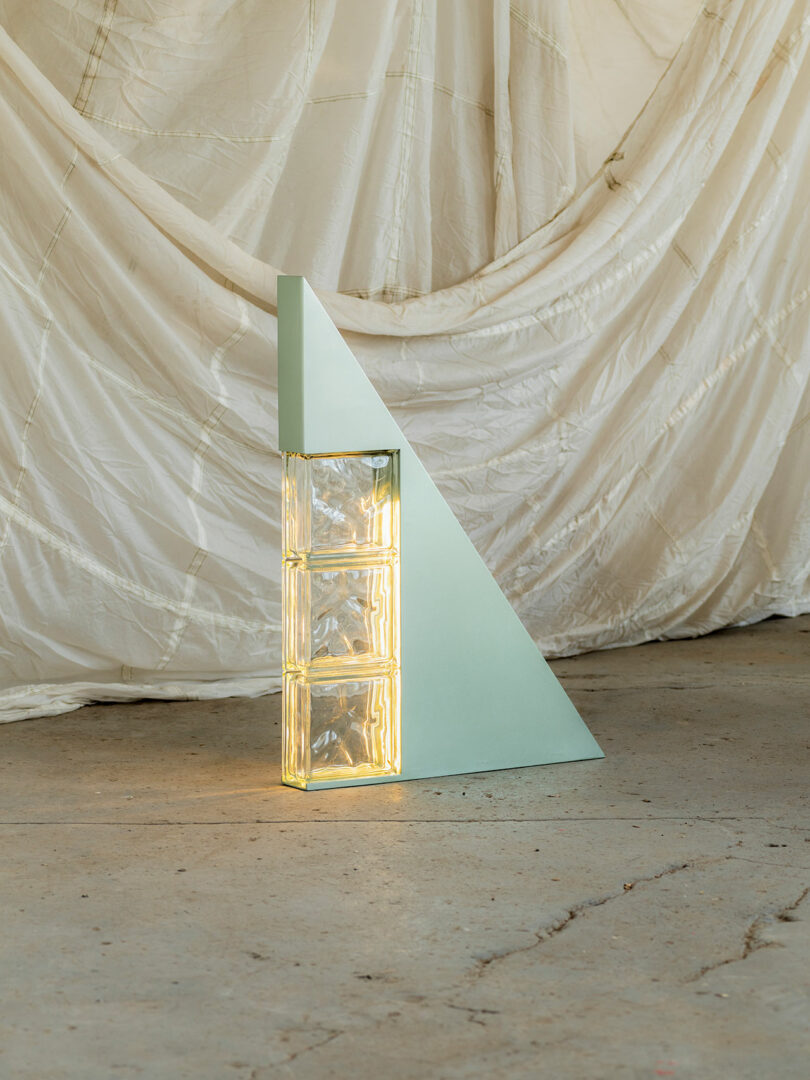
Flatiron Lamp
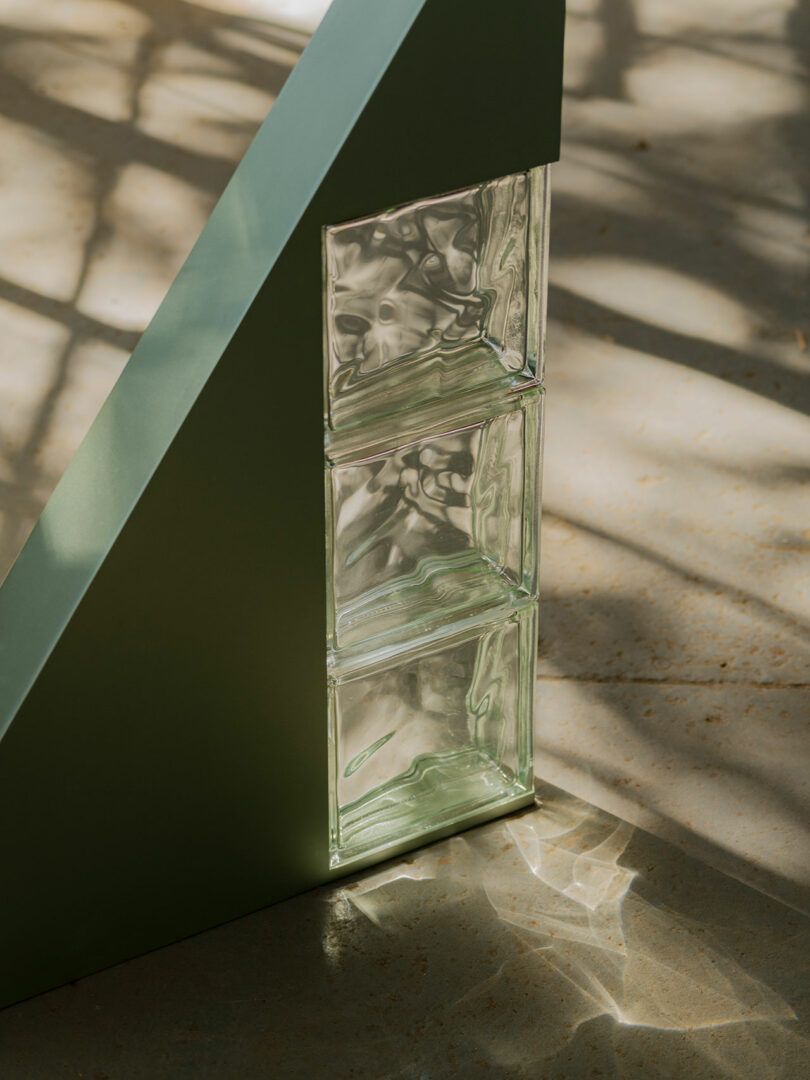
Glass block detail of Flatiron Lamp
The roundup’s other seating features satin upholstery accented by black piping to complement the more rigid pieces while echoing some of the round geometries previously introduced. The floor lamps and Glass Block Chair are painted in an automotive sea green hue to reference the translucent material’s trace-uranium tints, which are activated by light. Sculptural artifacts are adorned by steel spheres – sometimes at rest cradled by glass, and other moments appearing to be set in motion as a series – like in the armrests of the Radiant Bollard Chair and Orbital Plane Loveseat.
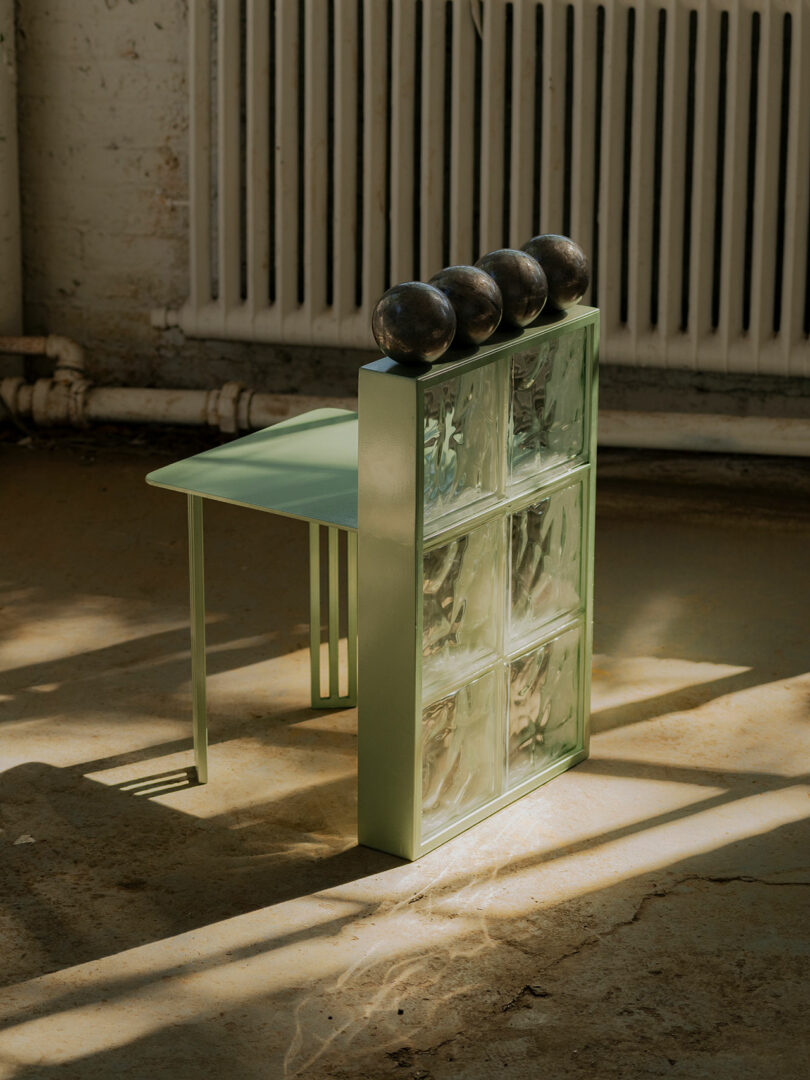
Radiant Bollard Chair
While metal is a recurring theme, glass block anchors the exhibition in its weightless aesthetic, functionality diffusing light, and ability to honor the nostalgic architecture of Rosenblatt’s Floridian roots. Though an acquired taste, glass block adds something fun to the material language present, tempering modern architecture’s typically pointed tone with kitsch. “Glass blocks have all these qualities I’m drawn to. They are beautiful architecturally,” Rosenblatt says. “Remixing and pulling them into design allowed me to add a sense of humor.”
To view more of the artist’s work, visit micahrosenblatt.com.
Photography by Marco Galloway.

With professional degrees in architecture and journalism, Joseph has a desire to make living beautifully accessible. His work seeks to enrich the lives of others with visual communication and storytelling through design. Previously a regular contributor to titles under the SANDOW Design Group, including Luxe and Metropolis, Joseph now serves the Design Milk team as their Managing Editor. When not practicing, he teaches visual communication, theory, and design. The New York-based writer has also contributed to exhibitions hosted by the AIA New York’s Center for Architecture and Architectural Digest, and recently published essays and collage illustrations with Proseterity, a literary publication.
[ad_2]